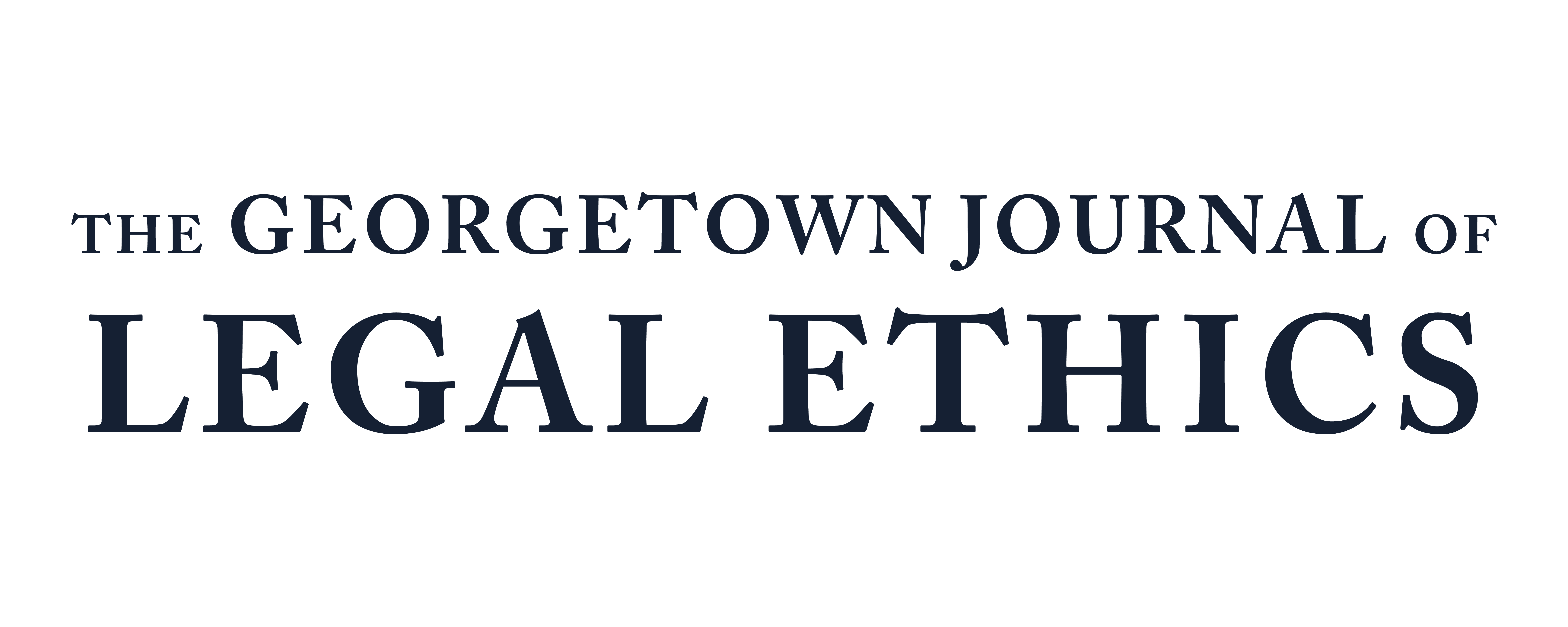“Noisier, Nastier, and Costlier”: Shoring Up Institutional Legitimacy in Judicial Elections Using a Legal Ethics Framework
Judicial elections are a conspicuous feature of the United States’ third branch of government. There are three main types of judicial election systems in the U.S.: partisan, nonpartisan, and reelection. Among these three system types, there are more than sixteen unique combinations across different jurisdictions and levels of courts. Thirty-nine of the fifty U.S. states conduct judicial elections to select or retain at least some of their judicial officers. With seventy-eight percent of states holding judicial elections, voting in judicial officers is more of the rule than the exception.
Amid the discussion on judicial elections is a concern about their cumulative effects on the judiciary’s institutional legitimacy. Professor James L. Gibson notes that “[i]nstitutions perceived to be legitimate are those with a widely accepted mandate to render judgments for a political community.” A prominent scholar of law and politics, Gibson describes institutional legitimacy as “perhaps the most important political capital [that] courts possess,” and finds that certain judicial campaign activities place this institutional legitimacy under threat. Gibson attributes this problem to specific campaign behaviors such as judicial candidates’ receipt of campaign contributions and their use of attack ads. But where threats to institutional legitimacy are present, there are also safeguards to provide a buffer against institutional decay. This Note focuses the majority of its attention on assessing the application of two such safeguards: judicial independence and judicial accountability. Although there is much debate concerning the appropriate bounds of each mechanism (e.g., whether holding judicial officers to a heightened level of public accountability unduly stifles their independence), both are critical to preserving and enhancing institutional legitimacy.
Trust in our legal system is of first order importance. When our system of government seeks to have judicial accountability and independence work synergistically with (rather than antagonistically against) each other, we can be more effective in preserving and enhancing trust in our legal institutions. This is especially important in governing judicial elections, which appear to pit judicial accountability and independence mechanisms against each other. This Note argues that using a legal ethics framework satisfies both judicial accountability and independence mechanisms, and when applied within the context of judicial elections, can help guide judicial conduct that risks eroding public trust in the judiciary.
Legal ethics, broadly construed, represent an internalized commitment to the highest standards of the legal profession. Using a legal ethics framework to shore up institutional legitimacy requires a thoughtful look at how legal ethics rules guide judicial conduct. The goal under a legal ethics framework is to preserve and enhance the institutional legitimacy of the judiciary. Judicial accountability and independence are the principal mechanisms for accomplishing that goal. Thus, under a legal ethics framework, striking “an optimal balance between judicial accountability and independence” is only a means to achieving the end goal, which is preserving and enhancing public trust in the judiciary.
Part I discusses institutional legitimacy and its importance to the judiciary. To that end, it briefly explains judicial accountability and independence as well as the merits of using a legal ethics framework to shore up the judiciary’s institutional legitimacy. Part I also proposes a legitimacy balancing test that, in conjunction with other judicial election reform efforts, could help enhance the institutional legitimacy of the judiciary. Part II briefly explains some of the ethics rules that govern judicial elections. It looks into the voters’ dilemma and how public accountability—the public’s capacity to hold judicial candidates accountable at the ballot box—is strained by a number of basic coordination problems. Some examples of these coordination problems include a general lack of awareness of relevant ethics rules, decentralized judicial campaign activity, and judicial misconduct of which the public is unaware.
Parts III, IV, and V address how judicial elections have become “noisier, nastier, and costlier” using Gibson’s discussion on judicial candidates’ policy pronouncements, attack ads, and campaign contributions as an organizing framework. Part III addresses judicial candidates’ policy pronouncements and provides a review of how politics have helped shape judicial selection thus far. This includes an empirically verified progression from merit-based to more partisanship-based considerations in the Senate Judiciary Committee’s confirmation of Supreme Court nominees. It also includes the increasing pressure faced by judicial candidates to engage in more elaborate electoral calculations and other manifestations of political ambition. Part IV examines attack ads in judicial campaigns. It also considers how heightened levels of campaign intensity and technology have the potential to shape how judicial campaigns are conducted. Part V then delves into a discussion on judicial campaign contributions. It looks at money and its influence in judicial elections as well as the role that interest groups play in seeking their desired judicial election outcomes. Taken together, thinking carefully about judicial elections and their distinctiveness from legislative elections requires a measured comparison across their many components. While judicial elections have become “noisier, nastier, and costlier” over time, the legal ethics rules that help guide judicial conduct are still capable of keeping pace. Indeed, the courts’ distinctiveness from politics more generally is key to preserving and enhancing the judiciary’s institutional legitimacy.
Subscribe to GJLE

